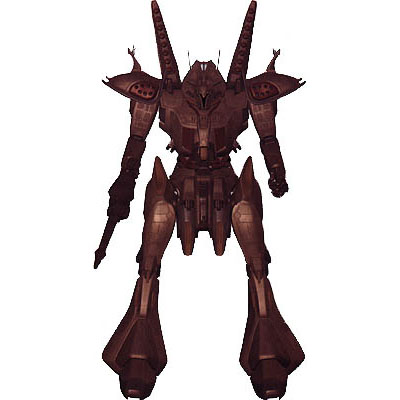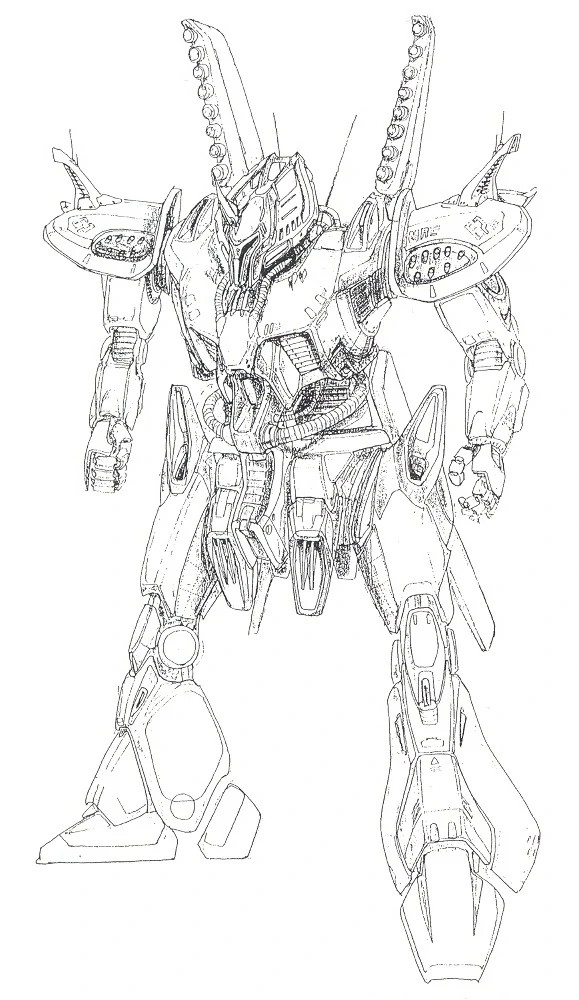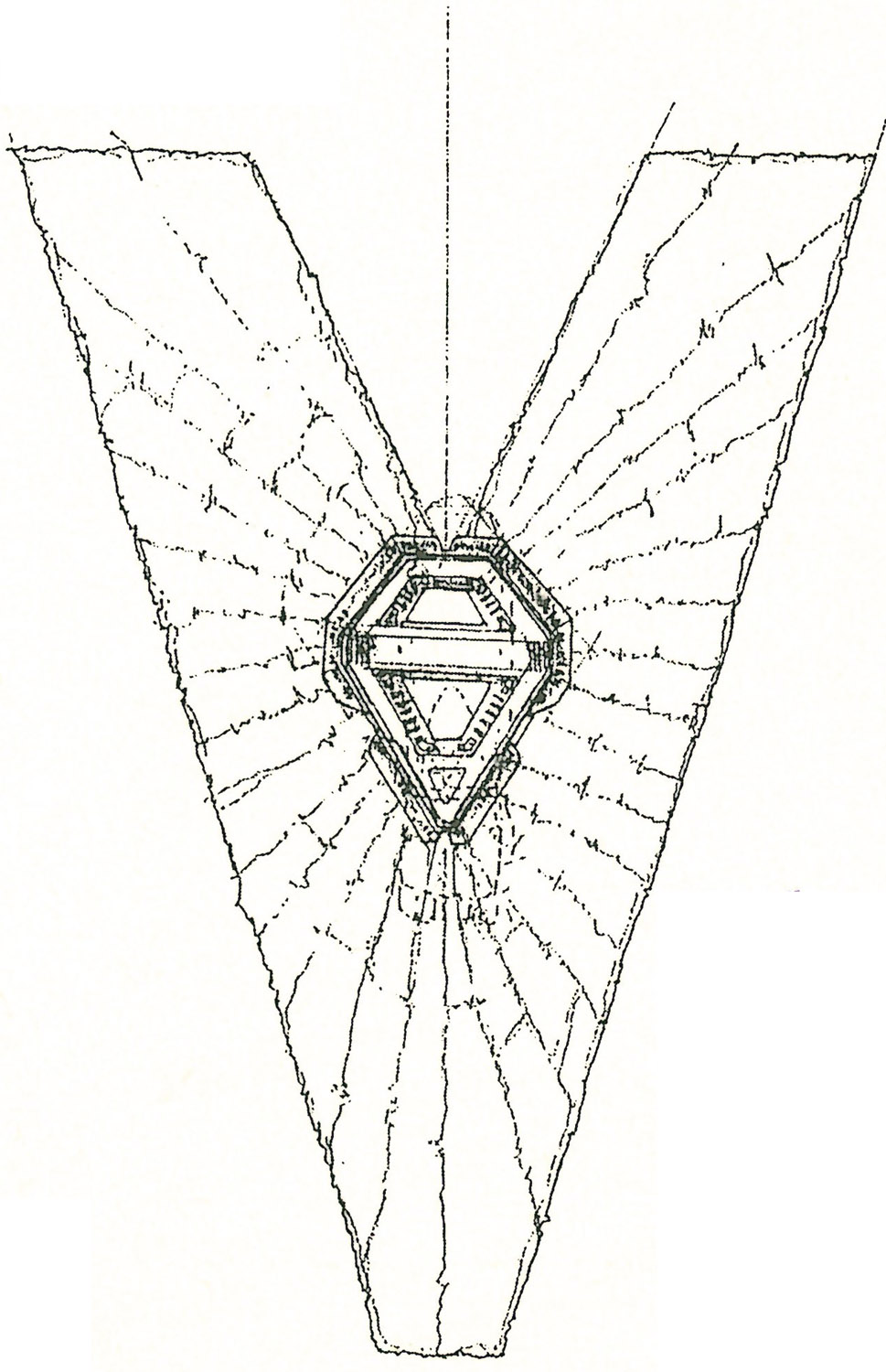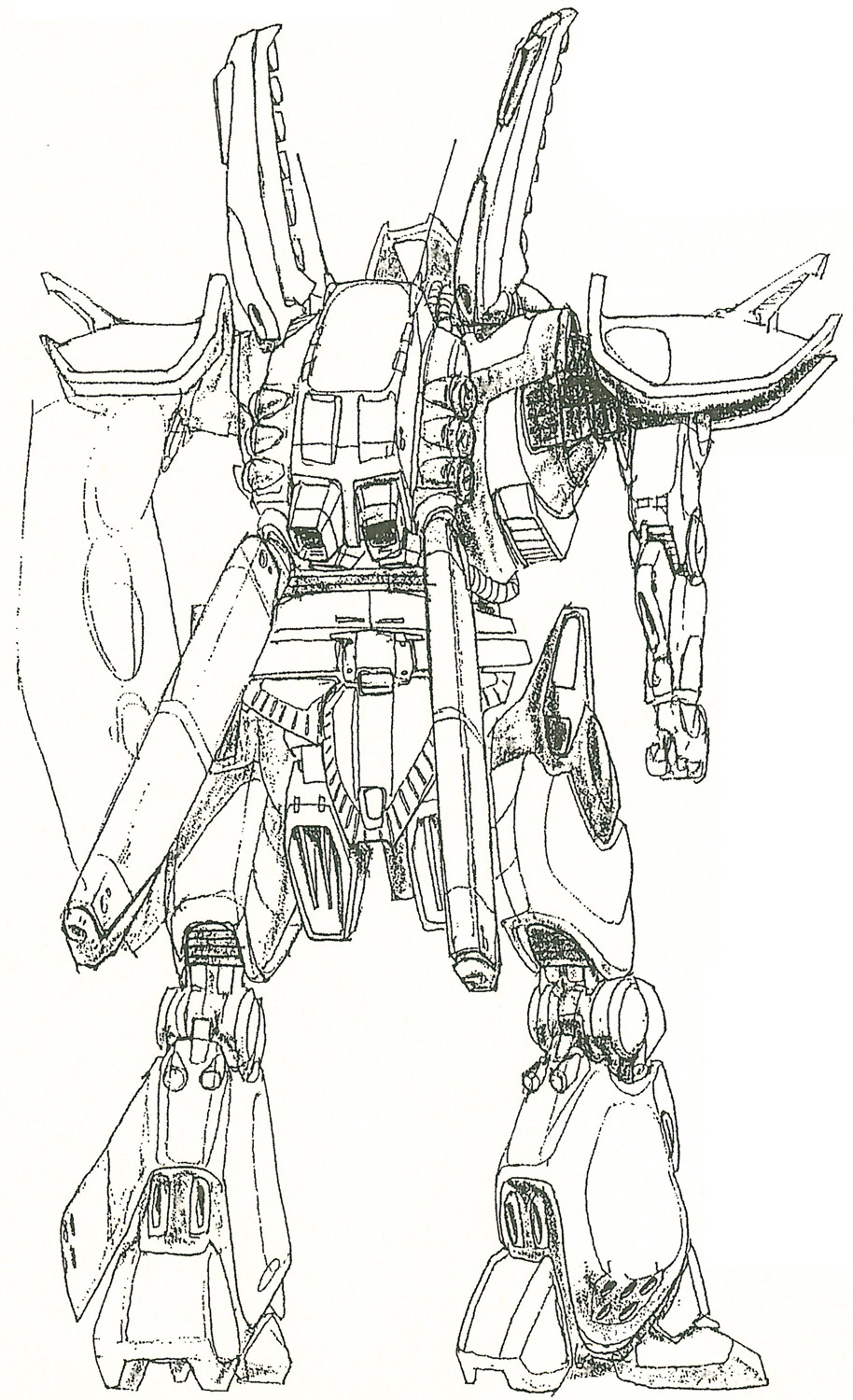Model number: CAMW-13
Code name: MW-Rai
Unit type: mass production unmanned mobile weapon
Manufacturer: CONSENT (Congress of Settlement Nations)
Operator: CONSENT
First deployment: UC 0223
Accommodation: none
Dimensions: head height 18.7-19.0 meters
Weight: standard: dry 43.6 metric tons; basic 67.4 metric tons; max gross 140.0 metric tons; equipped with booster: dry 52.0 metric tons; basic 113.4 metric tons)
Armor materials: unknown, armor thickness 23-52mm (standard); 12-52mm (equipped with booster)
Powerplant: Minovsky type ultracompact fusion reactor, output rated at 5,432 kW
Propulsion: rocket thrusters: 307,950 kg total (standard); 1,100,020 kg total (equipped with booster)
Performance: maximum output time: 110 minutes
Equipment and design features: sensors, range unknown; 2 x MPC-5 external power supply plug, mounted on hands; SHP-52-OP, M202, S171 equipment connector systems; M202- and S171-compatible modules (MPC-4- and MPC-5-compatible hand weapons); optional booster
Fixed armaments: 2 x 8-tube micro-rocket launcher, mounted on shoulder racks; 2 x 8-tube grenade launcher, mounted in shoulders; beam shield, mounted in left forearm; beam saber, stored in recharge rack, hand-carried in use
Optional hand armaments: beam lancer
The CAMW-13 MW-Rai was a mass produced unmanned version of CONSENT’s CAMS-13 MS-Rai. The MW-Rai could equip the same booster unit as the MS-Rai, and its armaments were identical. In UC 0223, CONSENT deployed the MW-Rai as part of its attack on Side 8. The MW-Rai was later succeeded by the CAMW-14 MW-Raid.
First appearance: G-Saviour (movie)
G-Saviour Info
Director:
Graeme Campbell
Writer(s):
Stephanie Pena-Sy
Mark Amato
Mechanical Designer:
Kunio Okawara
Musical Composer(s):
John Debney
Louis Febre
Format:
1 movie
Airdate:
Japan 12.29.2000








Comments